What Is Golden Week?
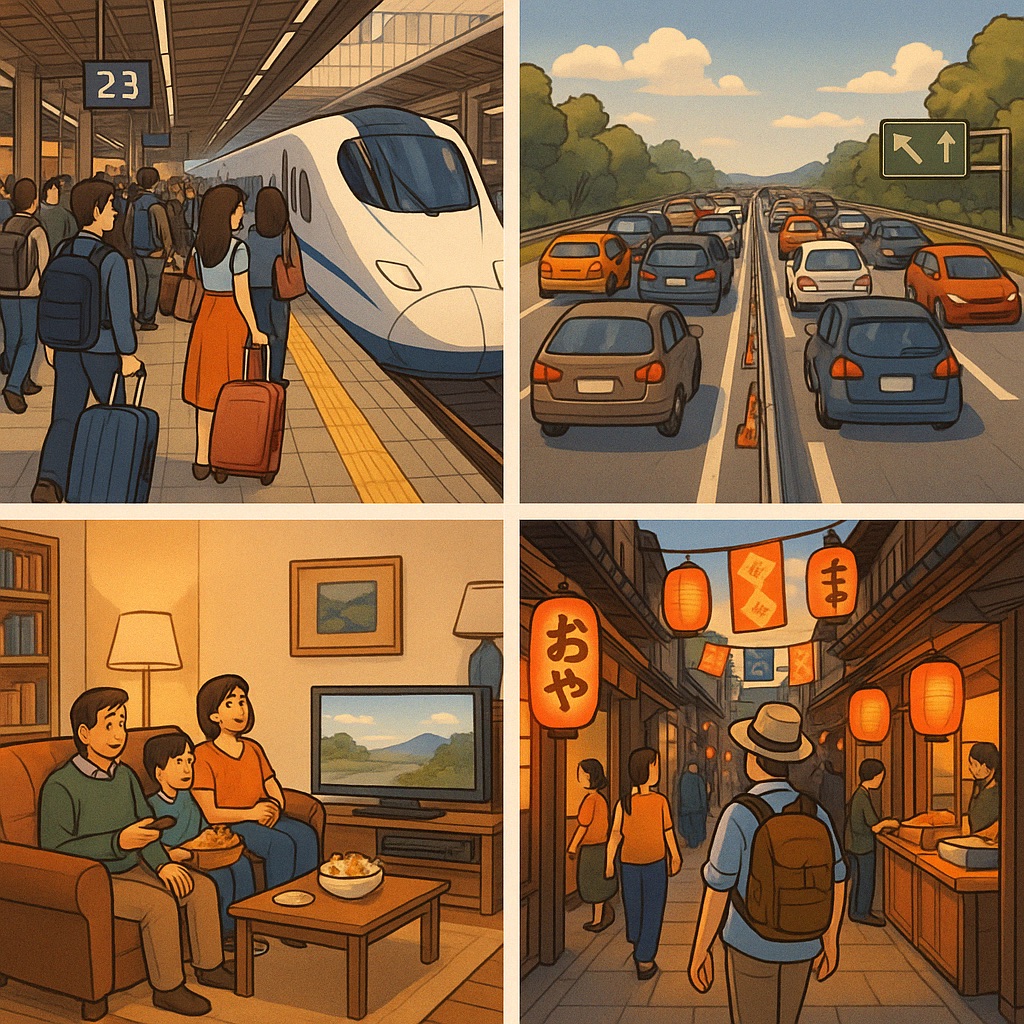
Hello, everyone! Welcome to this laid-back guide on how to experience Tokyo during the 2025 Golden Week.
In Japan, Golden Week is the name given to the stretch of holidays that takes place from late April through early May, when several national holidays line up and give people a chance to enjoy an extended break.
It is known for being one of the busiest travel periods in the country, with locals often flying overseas, taking bullet trains to famous domestic destinations, or simply staying home for a well-earned rest. In 2025, the main holiday runs from Saturday, May 3rd to Tuesday, May 6th, although April 29th is also a holiday and some people choose to take time off on the weekdays in between. This means a lucky few can enjoy up to 11 consecutive days off. While travelers from across Japan converge on popular spots, others remain in the city to shop, attend local festivals, or savor a less-crowded Tokyo. Understanding this seasonal buzz is your first step to planning an awesome trip.
Dates and Schedules for 2025
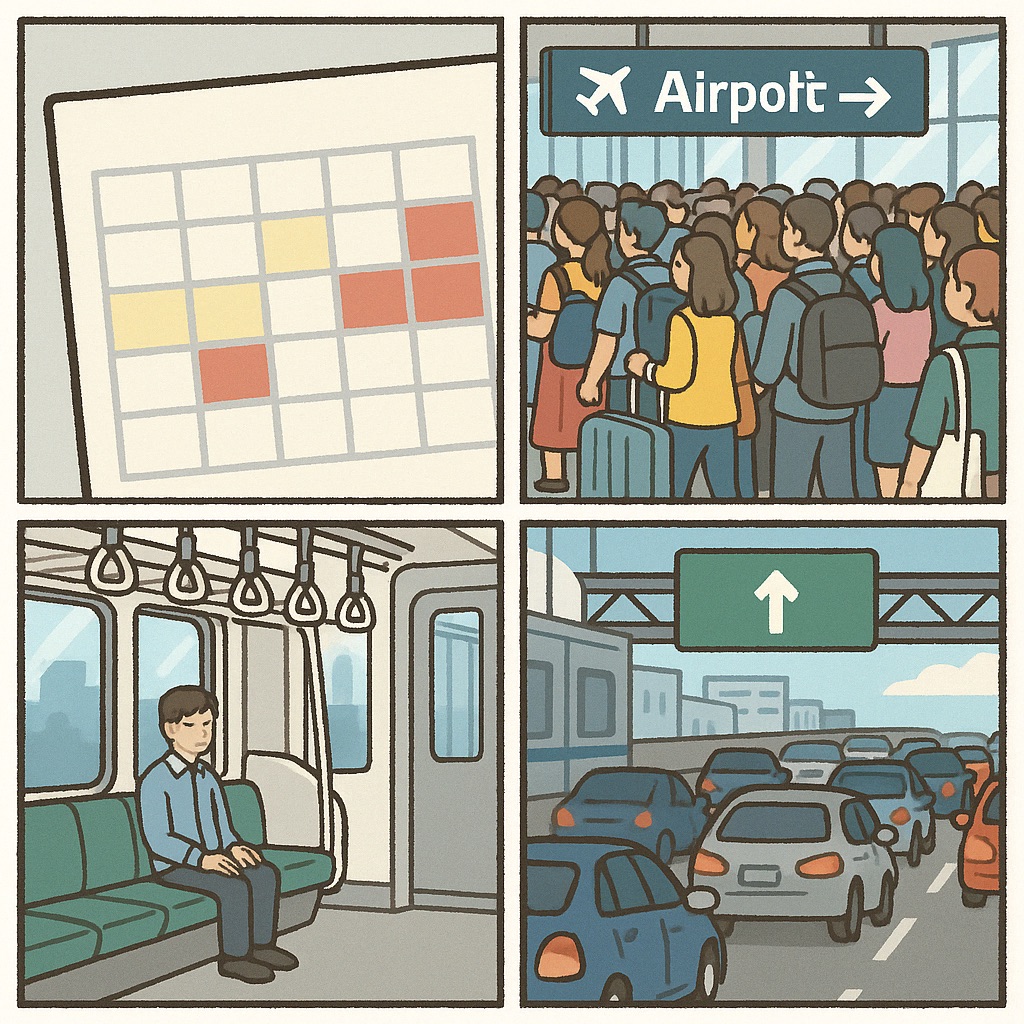
In 2025, the official Golden Week holidays center around May 3rd to May 6th, but April 29th, known as Showa Day, kicks off the festive mood. People often turn the weekdays between these holidays into vacation days if they can, which results in a potential 11-day holiday period.
The highways leaving Tokyo become cramped with vehicles, bullet trains fill up fast, and the airports witness a steady stream of outgoing passengers. On the flip side, commuter trains on weekday mornings feel surprisingly empty compared to usual rush hours. If you time your sightseeing well, you can manage to avoid peak crowds in certain spots.
The key is to keep track of which days are actual public holidays and which days are normal workdays, because that typically determines when crowds spike or dip.
Where Do the Locals Go During Golden Week?

During Golden Week, millions of people leave big cities to visit family or to see tourist hot spots like Kyoto, Okinawa, and Hokkaido. News outlets often show live reports of the traffic jams and long lines that form at airports and train stations, highlighting just how many people move around during this period.
At the same time, a fair share of Tokyoites decide not to travel. They stay in the city, enjoy local events, and take advantage of smaller crowds in places that are otherwise busy on normal weekends.
This stark contrast in movement affects how you experience the city. Popular districts such as Shibuya or Asakusa might feel more crowded than ever, but residential neighborhoods and some local shopping areas can feel unexpectedly calm. Knowing this pattern will help you decide whether you want to immerse yourself in the festive, busy side of Tokyo, or seek out the quieter corners to escape the hustle.
Major Sightseeing Spots in Tokyo
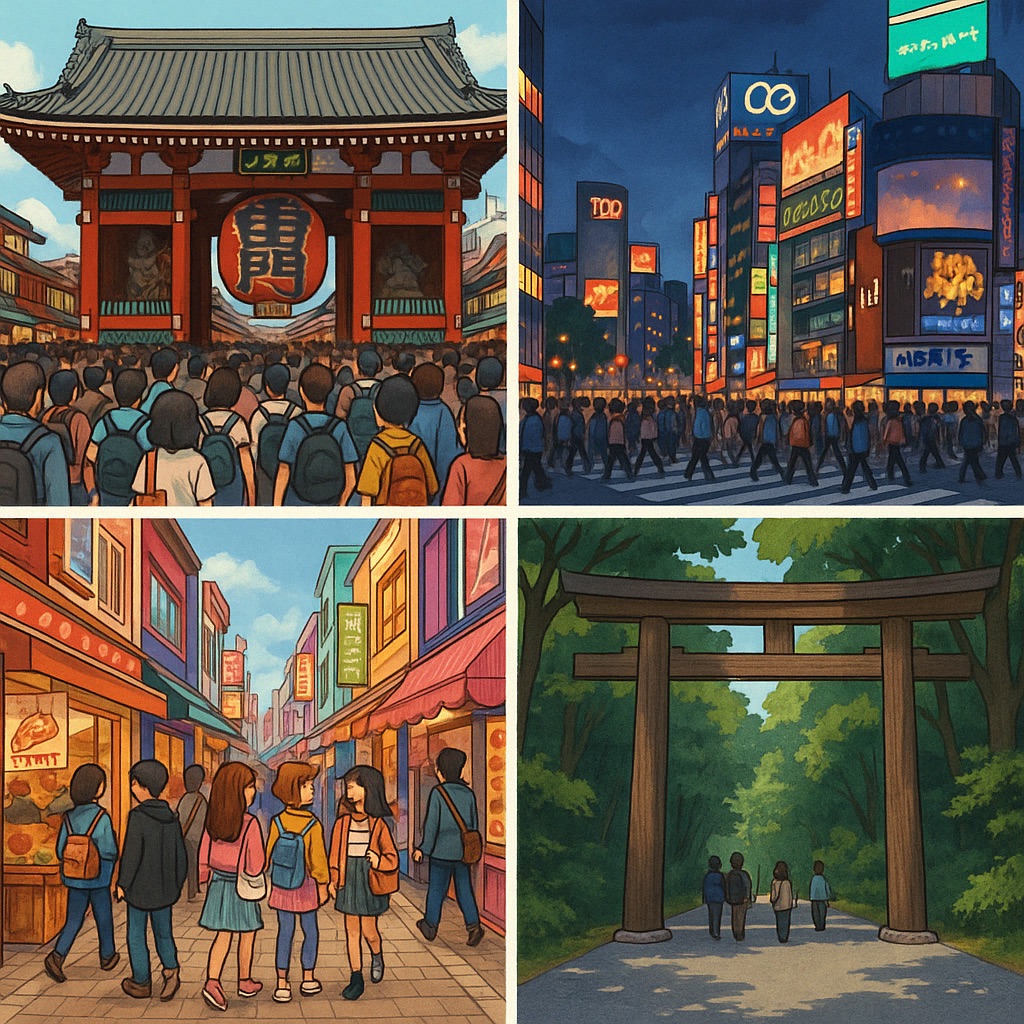
Even though Golden Week can be crowded, there are iconic parts of Tokyo that first-time visitors simply should not skip. Asakusa is often at the top of the list because it offers a taste of traditional Japan right in the modern capital.
Sensoji Temple stands at the heart of Asakusa, accessed through the famous Kaminarimon Gate and Nakamise Shopping Street. The street is lined with souvenir shops and food stalls, providing a vibrant introduction to the city’s heritage. Shibuya is widely recognized for its scramble crossing, where hundreds of people cross in all directions at once. It is a place that symbolizes Tokyo’s busy, neon-lit side.
Nearby Harajuku is a short walk or train ride away and serves as a fashion hub for young trendsetters. Takeshita Street, with its variety of colorful boutiques and crepe stands, offers a lively experience that contrasts beautifully with the tranquil greenery of Meiji Jingu, located just around the corner. While crowds will be larger in these areas during Golden Week, a little patience will reward you with some of Tokyo’s most unforgettable sights.
How to Avoid the Crowds
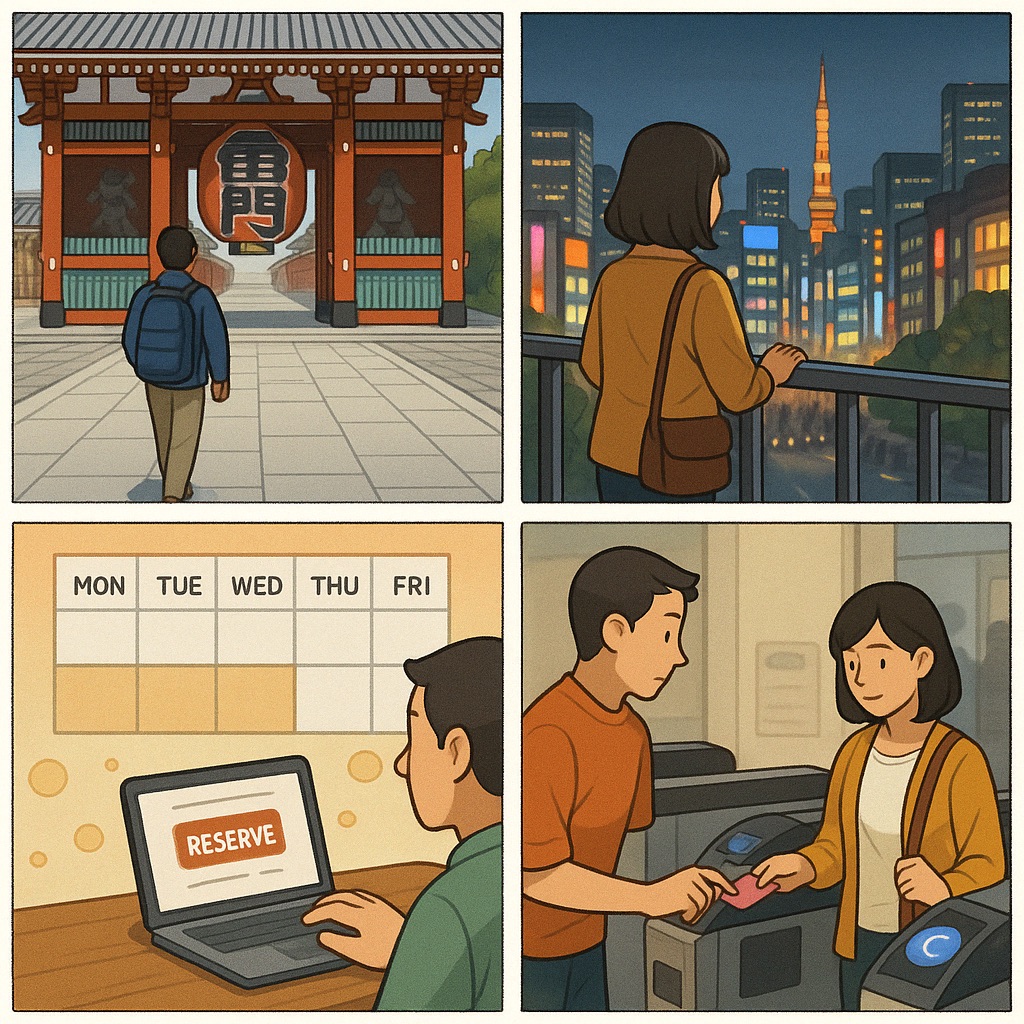
Traveling during Golden Week does not automatically mean accepting endless lines and bustling crowds at every turn. One useful approach is to get an early start in the morning or to tour popular sites later in the evening.
Many temples and shrines are at their quietest right after opening, which can allow you to explore in peace before big groups arrive. Another strategy is to utilize the weekdays between the public holidays, such as April 30th or May 1st and 2nd in 2025. Many Japanese people go back to work or school on these in-between days, so the worst of the crowds dissipates. Making reservations online for observation decks or special exhibits can also save you from standing in long queues.
Finally, consider purchasing an IC card like Suica or PASMO for contactless payment on trains and buses. This reduces the hassle of buying single-ride tickets and helps you skip ticket machine lines altogether. By mixing and matching these tactics, you can significantly lighten the stress that often comes with peak-season travel.
Exploring Tokyo’s Local Neighborhoods

If your aim is to see a more authentic side of the city or if you have already checked off the main attractions, delving into local neighborhoods can be incredibly rewarding. Yanaka is a charming district known for its nostalgic ambiance that recalls an older Tokyo.
Wandering through the narrow streets of Yanaka Ginza, you might spot traditional shops selling homemade snacks or watch everyday residents out shopping for produce. Shimokitazawa, commonly shortened to Shimokita, is another characterful area brimming with vintage clothing stores, cozy coffee shops, and intimate live music venues.
This neighborhood exudes a bohemian atmosphere and is a favorite among students and creative types looking for a break from typical urban life. Kiyosumi-Shirakawa, celebrated for its café culture, is a delightful option for coffee enthusiasts who can hop from one roastery to another. Whether it is sipping craft coffee or exploring quaint alleyways, each of these neighborhoods displays a calmer, more personable side of Tokyo.
Living Like a Local

Venturing beyond the obvious tourist spots allows you to immerse yourself in everyday Tokyo life. One staple of local culture is the sento, a neighborhood bathhouse where people pay a small fee to relax in large communal tubs.
The nostalgic atmosphere and friendly chatter offer a unique glimpse into a long-standing tradition. Another quintessential experience is visiting a small, lantern-lit izakaya, often tucked away in side streets or under railway tracks.
Locals crowd these shops after work to unwind with drinks, skewered chicken, and other delicious small plates. Engaging in conversation may require a few Japanese phrases, but the warmth of the environment tends to transcend language barriers. Strolling through a typical supermarket can also be an adventure.
You will discover a wealth of prepared foods, unusual snacks, and local treats at surprisingly good prices. Picking up items like green tea KitKats can be an inexpensive and memorable way to bring souvenirs back home.
Lastly, finding a spot in a city park for a quick bento picnic lets you pause and watch life go by. Whether it is Yoyogi Park or a lesser-known local park, you will see families, joggers, and fellow picnickers enjoying the open space. This is when Tokyo shows its laid-back side, reminding you it is not just a place of ceaseless bustle.
Essential Apps and Transportation Passes
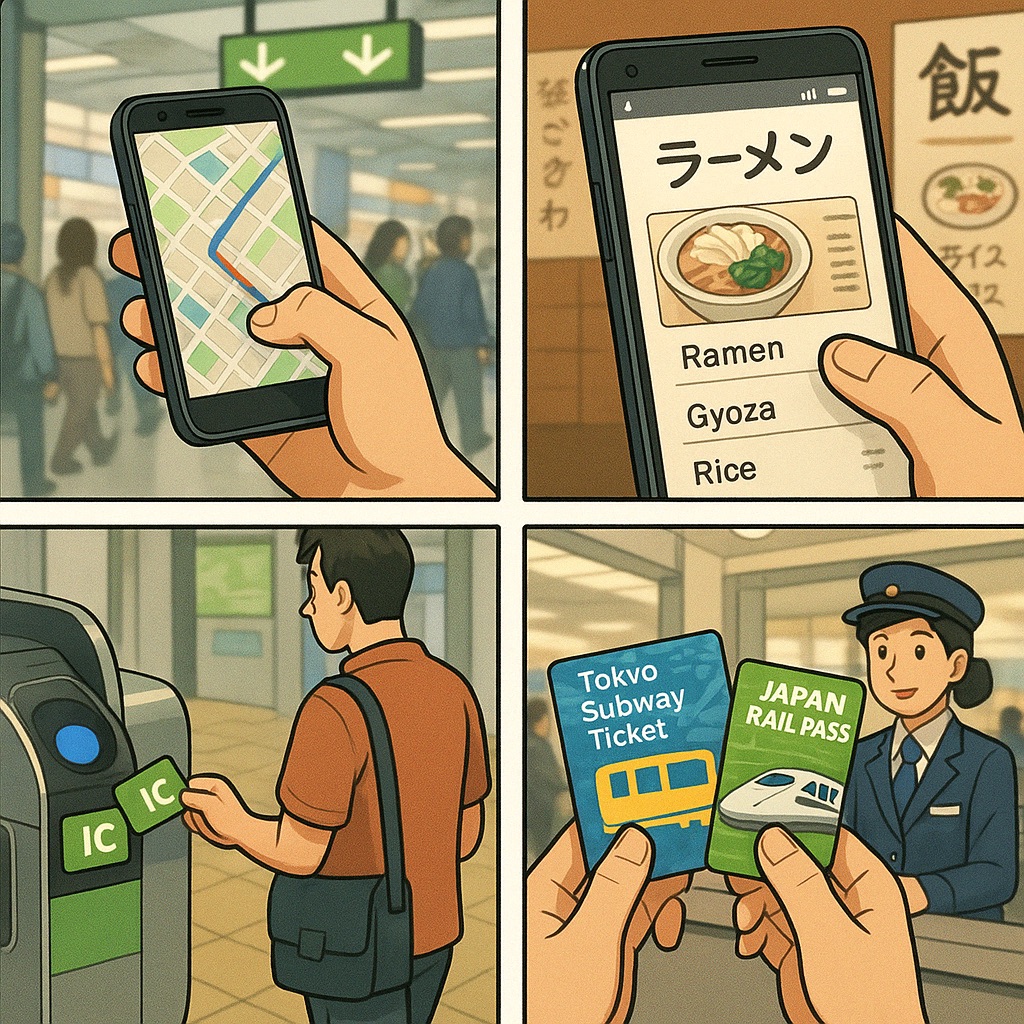
There are a few practical tools that can streamline your Golden Week trip. Google Maps is ideal for navigating Tokyo’s complex train system and the numerous walking routes connecting different stations. Language can be a challenge in certain local eateries or when reading menus, so having Google Translate on your phone allows you to quickly interpret written Japanese through its camera feature.
Apps like NAVITIME or other train route planners provide exact departure times and suggest the best connections, making complicated transfers a breeze to figure out. The Suica or PASMO IC cards mentioned earlier are crucial for quick and easy payments on trains, buses, and even some vending machines and convenience stores.
Travelers planning to focus on the subway can save money with the Tokyo Subway Ticket, which grants unlimited rides on both Tokyo Metro and Toei Subway lines for a set period (24, 48, or 72 hours). Those interested in traveling beyond Tokyo should look into the Japan Rail Pass, commonly referred to as the JR Pass, which covers most JR trains, including many of the bullet train routes, and is immensely helpful if your itinerary includes multiple long-distance journeys.
Final Thoughts
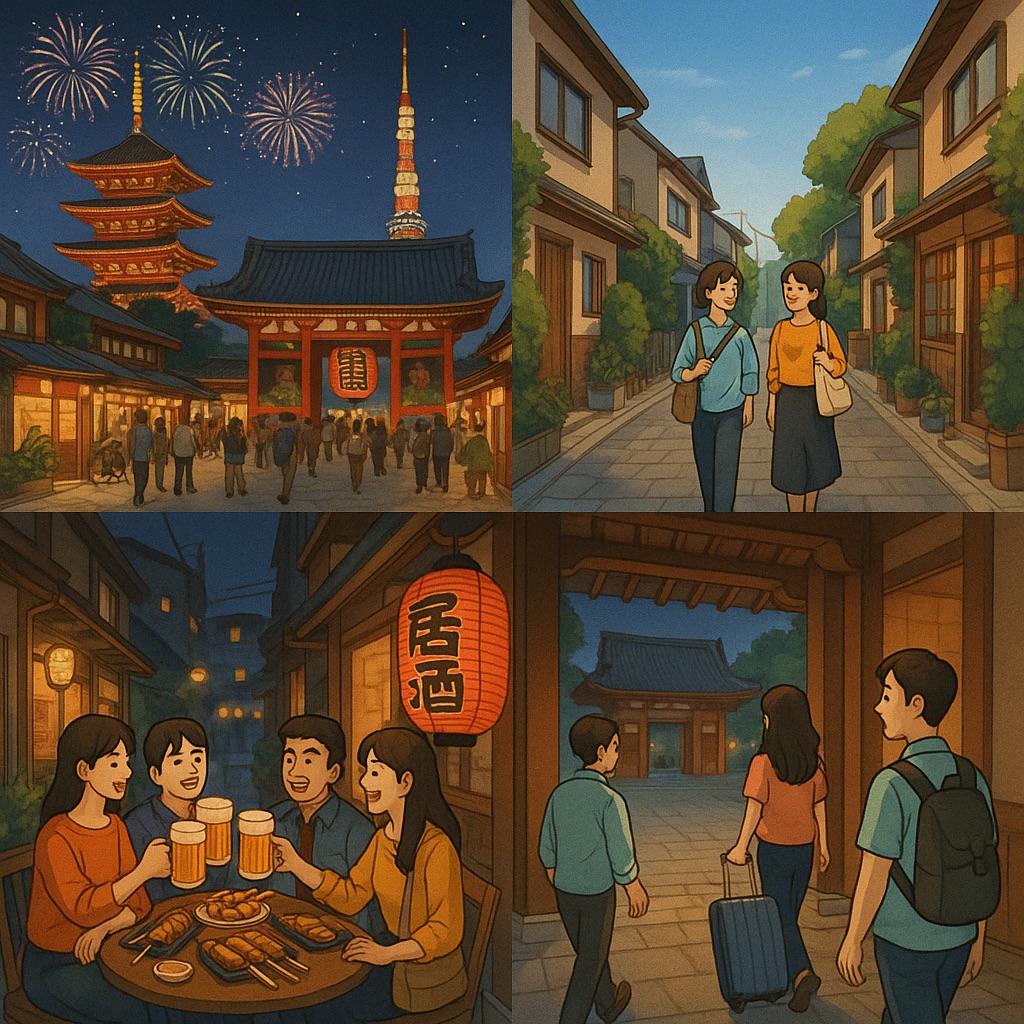
Golden Week in Tokyo is a remarkable time when the city’s energy hits a high point, with residents and visitors alike celebrating the holidays.
Although the crowds can be daunting, proper preparation and flexibility in your schedule can help you navigate the rush and discover memorable places you will not encounter anywhere else. By choosing a blend of the well-known sights like Asakusa and Shibuya, and more low-key areas such as Yanaka and Shimokitazawa, you can build a balanced itinerary that features Tokyo’s diverse flavors.
Embracing local activities, whether it is enjoying a sento, savoring late-night snacks in an izakaya, or browsing a neighborhood supermarket, will leave you with a richer sense of Tokyo’s everyday spirit.
If you keep these ideas in mind, you will find that your 2025 Golden Week adventure transforms into a journey that is both exciting and deeply personal. Enjoy your time in this incredible city, and happy travels!


